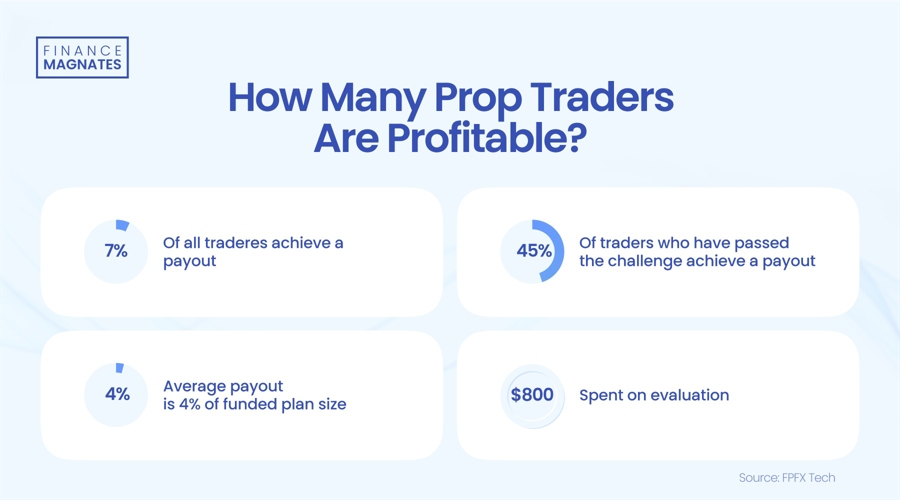
Prop Trading Payout Claims: Fact or Fiction?
Statements like “We paid $1 million to traders last week” have become commonplace in the proprietary (prop) trading industry. These bold claims are now a key marketing tactic to build credibility and attract aspiring traders. But how accurate—or even verifiable—are these figures?
Behind the Hype: A Lack of Transparency
While these firms technically classify as trader-funded platforms, not regulated financial institutions, they often operate like eCommerce businesses. They sell trading challenges in simulated environments, where traders who meet specific targets are promised payouts. However, unlike regulated forex or CFD brokers, prop firms aren’t required to report statistics such as the percentage of losing retail clients or detailed financial disclosures.
Their reporting obligations—often limited to basic income statements or balance sheets depending on jurisdiction—do not come close to the standards applied to financial service providers. This makes it nearly impossible to verify the massive payout claims many firms regularly advertise.
The Crypto Illusion
Although crypto payments offer a degree of traceability via blockchain, the waters are still murky. Some firms disburse earnings in cryptocurrency, which allows platforms like Payout Junction—a tracker linked to Riseworks.io—to monitor on-chain transactions. These sites often show millions paid out each month, giving an impression of high trader success rates.
However, there’s a crucial caveat: these wallets may also be used for vendor payments, salaries, and operational expenses—not just trader payouts. In fact, a disclaimer on Payout Junction notes that wallet activity may not reflect trader earnings exclusively and that listings should not be seen as endorsements.
Inflating the Numbers
Industry insiders have confirmed that some firms lump vendor and operational costs into their payout figures to make them appear more impressive. This tactic has led many to question the legitimacy of reported payouts. One prop trading firm told Finance Magnates it refrains from making public claims for precisely this reason—it’s impossible to independently verify such numbers.
They added that remaining silent sometimes places them at a disadvantage. When competitors inflate figures, more conservative firms may appear smaller or less successful, even if they’re operationally stronger or more profitable.
A Closer Look at Trader Success
Data from FPFX Tech reveals that only 7% of traders actually turn a profit on these platforms. Even among the successful, average returns amount to just 4% of their allocated capital—underscoring how slim the margins are for even the most capable traders.

Calls for Accountability
As discussions around potential regulation for the prop trading space intensify, many industry experts argue that accurate and verifiable payout reporting should be a top priority. If regulation is introduced, requiring firms to distinguish trader payouts from operational costs could go a long way in increasing transparency and trust.
